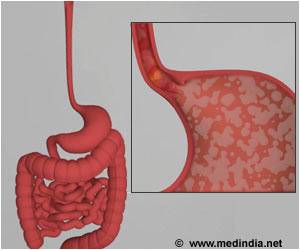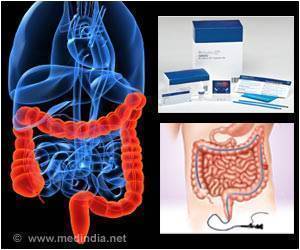Flexible endoscopic treatment of Zenker's diverticulum by using a diverticuloscope offers a treatment modality with a very low complication rate, reports a new study.

Zenker's diverticulum (ZD) is a mucosal outpouching through the posterior pharyngeal wall resulting from increased hypopharyngeal (the bottom and back part of the throat) pressure due to fibrosis of the upper esophageal sphincter. Symptoms include dysphagia (difficulty swallowing), regurgitation, and cough, and the condition may ultimately lead to weight loss and/or aspiration. Standard treatment consists of a myotomy (a surgical procedure cutting the muscle to relieve constriction) of the cricopharyngeal muscle extended to the tissue bridge between the esophagus and the diverticulum.
This results in a favoring of outflow of food from the diverticular pouch into the esophagus. Myotomy can be performed by two techniques: open surgical treatment, often including a complete diverticulectomy, or an oral endosurgical approach by using a rigid endoscope. Currently, the endosurgical approach using a rigid endoscope is preferred to open-neck surgery because of a comparable success rate in terms of symptom improvement and reduction in the length of hospital stay. Endotherapy by using a flexible (versus rigid) endoscope was first described over 20 years ago and has continued to evolve.
A previous study showed that diverticulotomy (removal of the diverticulum or abnormal pouch) with a flexible endoscope and soft diverticuloscope is an effective treatment for ZD, and another suggested that this treatment was safer and more effective than freehand treatment. "This initial experience prompted us to modify the technique with systematic clipping of the bottom section at the end of the procedure to reduce the risk of perforation and improve hemostasis (blood clotting).
In this study, we report our long-term results of ZD treatment by using flexible endoscopy assisted by the use of a soft diverticuloscope," said lead author Jacques Devière, MD, PhD, Hôpital Erasme, Brussels, Belgium. "Our results showed that endoscopic incision of ZD by using a soft diverticuloscope and completed by endoclips is safe and efficient at short-term and long-term."
MethodsAll patients with ZD who were treated in the medical surgical department of Hôpital Erasme, Brussels, Belgium between July 2002 and June 2011 were included in the retrospective study. Patients were treated by endotherapy with a soft diverticuloscope by the same gastroenterologists who had extensive experience in therapeutic endoscopy. The soft diverticuloscope is placed on the endoscope like an overtube and is gently advanced up to approximately 20 cm from the teeth. It must be noted that the diverticuloscope used in the study is not U.S. Food and Drug Administration approved but is commercialized and approved in Europe and Canada.
Advertisement
The cut is performed until the muscle fibers are completely cut, and then the cut is extended to a section of the anterior ZD and posterior esophageal wall up to approximatively 1 cm from the bottom. This avoids "slipping" into the esophagus with both flaps of the diverticuloscope and facilitates the placement of the clips. At the end of the procedure, one to three endoclips are placed to prevent perforation or bleeding.
Advertisement
Regurgitations and chronic cough dropped from 73 percent and 27 percent to 11 percent and 2 percent at the end of follow-up, respectively. Symptom recurrence occurred in 31 patients (23.1 percent) at a median of seven months; among them, 23 had a second treatment and 18 became asymptomatic, and only five required a third treatment, after which only one patient remained symptomatic.
The researchers concluded that flexible endoscopy has become a new standard for ZD treatment when performed with adequate equipment inspired by rigid diverticuloscopes. This approach has a lower rate of adverse events than open surgery or endoscopic stapling techniques. Moreover, the risk of general anesthesia in elderly patients can be avoided because airways are protected by the diverticuloscope. Recurrence is about 25 percent in the long-term but is easily amenable to successful repeated endoscopic treatment.
In an accompanying editorial, David A. Katzka, MD and Todd H. Baron MD, FASGE, Division of Gastroenterology and Hepatology, Mayo Clinic, Rochester, Minnesota, state, "It is unknown how a transoral flexible endoscopic approach will compare with surgical therapy for relief of symptoms over decades…In one recent study in which transoral rigid endoscopic therapy was initiated in 94 percent of patients, in approximately 40 percent of the cases (including recurrences), only traditional surgery provided reliable treatment." The authors went on to say, "Overall, we believe that the work by Huberty et al. provides strong support for transoral flexible endoscopic treatment of ZD and the opportunity for gastroenterologists to expand their therapeutic armamentarium."
Source-Eurekalert









